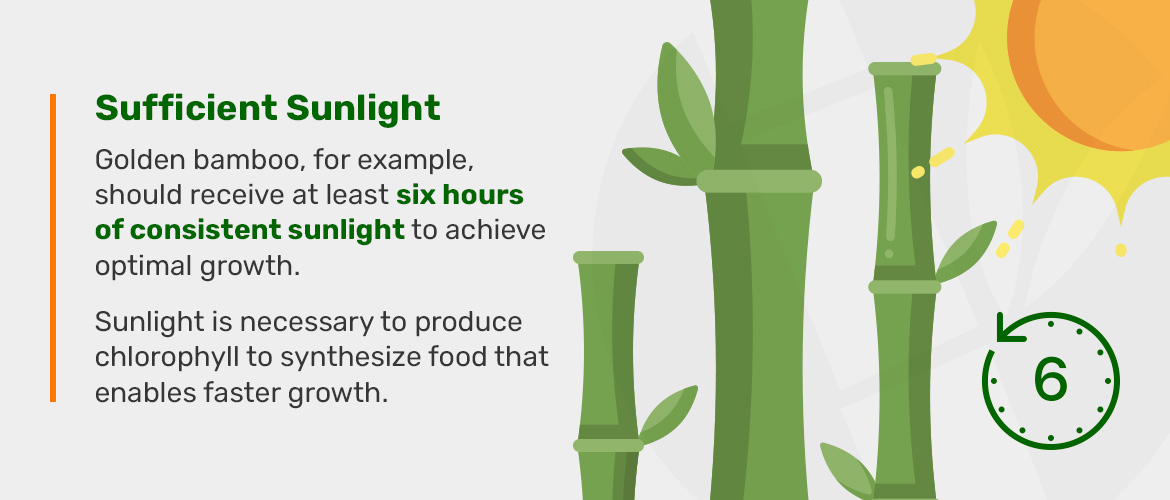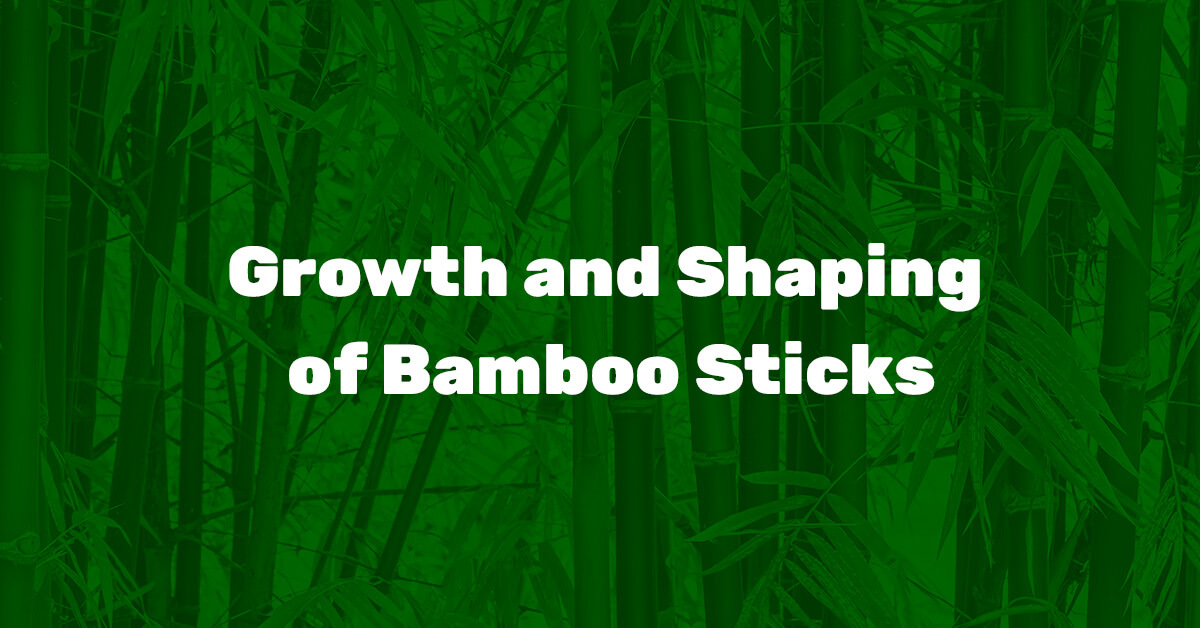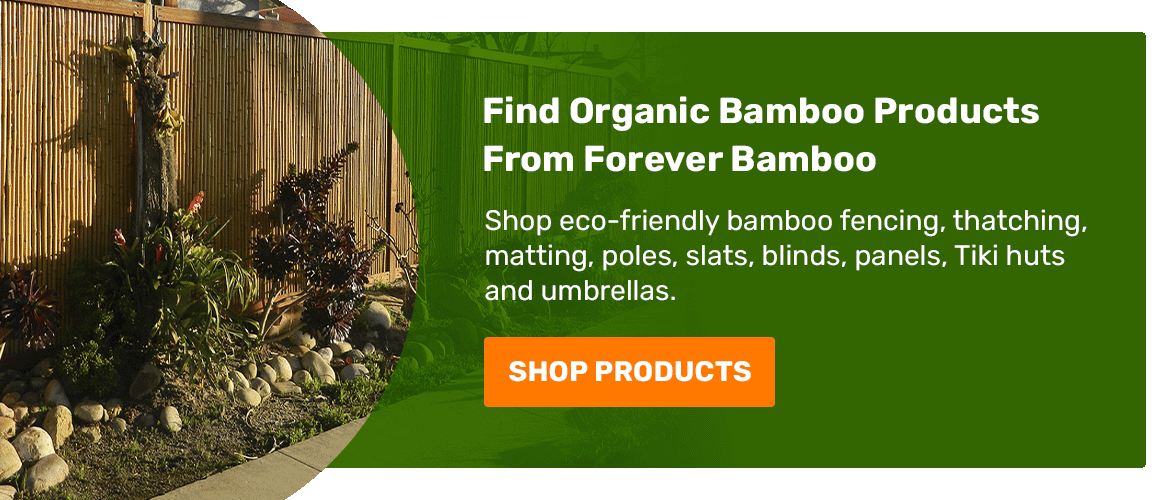Bamboo is an intriguing perennial grass often confused for a tree. Understandably so, given that it grows as tall as most trees and can be just as hard — if not harder — than wood! Actually, some bamboo types have a stronger structure than steel. Even still, they maintain their remarkable flexibility and lightweightness.
Another interesting characteristic of bamboo is its tapered shape: It has a thick base that’s mostly even but tapers toward the top. In this article, we’ll explore how bamboo grows and how this affects its shape. We’ll also touch on some ways bamboo farmers optimize bamboo growth to achieve the desired shape.
How Does Bamboo Grow?
To grow bamboo, you’d typically start by replanting a bamboo plant, not by planting bamboo seeds. That’s mostly because bamboo seeds are very rare, and they lose their viability fast. Most bamboo flowers every 60-80 years, with some cycles happening every 120 years. And even if a whole grove does flower generously, the seeds cannot be stored for very long and should be sown as soon as possible.
Because bamboo is a colony plant, it’s best to transplant one that’s adapted to a colony as opposed to an individual plant. Once transplanted, bamboo starts shooting in the spring — between March and May in the Northern Hemisphere — to produce new canes. These shoot out of the ground and grow at what is mostly expressed as super speed. Some varieties can grow more than 2 feet in one day!
Bamboos grow taller and wider for about 60 days, after which they redirect energy to their roots to develop more canes. After about three to five years — once the bamboo is established — new canes will spring up.
Every spring, adult bamboo plants produce new leaves to push off the old foliage. The new leaves emerge as small shoots behind the old foliage in early spring, and this unravels into full leaves that are up to 4/5 inches wide and between 2 and 6 inches long.
The newer shoots are typically thicker and have longer canes than the parent bamboo and continue to form a thicker colony until maturity. The size and thickness of the new bamboo are, however, dependent on a variety of factors, as discussed below.
Factors That Affect the Growth and Shape of Bamboo
While bamboo is often associated with being grown in Southeast Asia, it can really grow almost anywhere. But that’s not to say there aren’t some factors that affect the size and thickness of bamboo. Some of these include:
The Quality of the Seed or Plant
As mentioned earlier, it’s best to start with a healthy and established colony plant as opposed to bamboo seeds. It’s also great if the plant has many large rhizomes to ensure healthy growth and division of the colony. You should avoid buying freshly dug-up plants because they’re prone to slow growth as a result of the recent separation from their energy source.
Optimal Soil and Water Conditions
Bamboos don’t have very particular soil and water requirements for growth, which is why they grow well on multiple continents. Ideally, bamboo thrives in loamy soil with a slightly acidic pH level. It can also flourish in clay or sandy soils provided they’re aerated, well-drained, and neither too dry nor soggy. The ability of bamboo to flourish in most soil conditions stems from its shallow roots that don’t need to dig deep for nutrients.
Bamboo farmers optimize soil and water conditions by mulching to keep the soil moist for longer and prevent evaporation. Adding fertilizer, compost and manure to the soil also helps speed up the growth of bamboo by making the soil slightly acidic and providing the bamboo with the energy to grow taller and thicker.
Sufficient Sunlight

Bamboo thrives in warm climates with ample sunshine. Golden bamboo, for example, should receive at least six hours of consistent sunlight to achieve optimal growth. Sunlight is necessary to produce chlorophyll to synthesize food that enables faster growth. Most bamboo species need filtered light, especially those growing in harsh summer climates. Limiting direct sun exposure can also help prevent yellowing of the leaves.
Proper Pruning and Grooming
You can also ensure your bamboo plant takes on your desired shape by pruning the plants often. Pruning bamboo involves removing the old and dead culms right above the node to make room for new ones to sprout during the growing season. It ensures that there’s enough sunlight shining on the emerging culms and there’s sufficient energy to encourage their growth.
Late winter is the best time to prune bamboo to avoid accidentally pruning the new nodes. In addition, pruning is only necessary for established bamboo, which is typically bamboo that is more than three years old.
How Bamboo Type Affects Its Growth and Shape
The type types of bamboo affect its growth and shape. Clumping bamboo is the most common type and the most often preferred type, mainly because running bamboo is considered invasive in many environments.
While clumping bamboo grows in a blob, running bamboo spreads like “bushfire” if left unchecked. The latter can spread to more than 100 feet before it starts sprouting, meaning you’ll have numerous bamboos sprouting at almost the same time in this stretch. It’s difficult and expensive to control the growth of the running bamboo. Doing so requires things like root barriers or concrete or metal sheeting.
It’s easier to control the growth of clumping bamboo because this bamboo sticks to the area you plant it in. Clumped bamboo starts with a single root that then grows into a beautiful colony of thick and super-strong bamboo that can be harvested for various applications. It’s the best kind to plant in your backyard or around your home without invading your neighbor’s space.
Find Organic Bamboo Products From Forever Bamboo
Are you looking to design your residential or commercial tropical commercial oasis? Shop eco-friendly bamboo fencing, thatching, matting, poles, slats, blinds, panels, Tiki huts and umbrellas from Forever Bamboo’s large inventory. We are the nation’s No. 1 provider of natural bamboo products and have the largest inventory of materials and accessories in the industry.
We have a United States-based warehouse to ensure fast shipping and a reliable customer service team available five hours a week. Don’t know where to start when choosing the right bamboo products? Call us at 877-912-2244 or contact us online to have our expert staff answer all your bamboo-related questions and take the guesswork out of materials and measurements.


